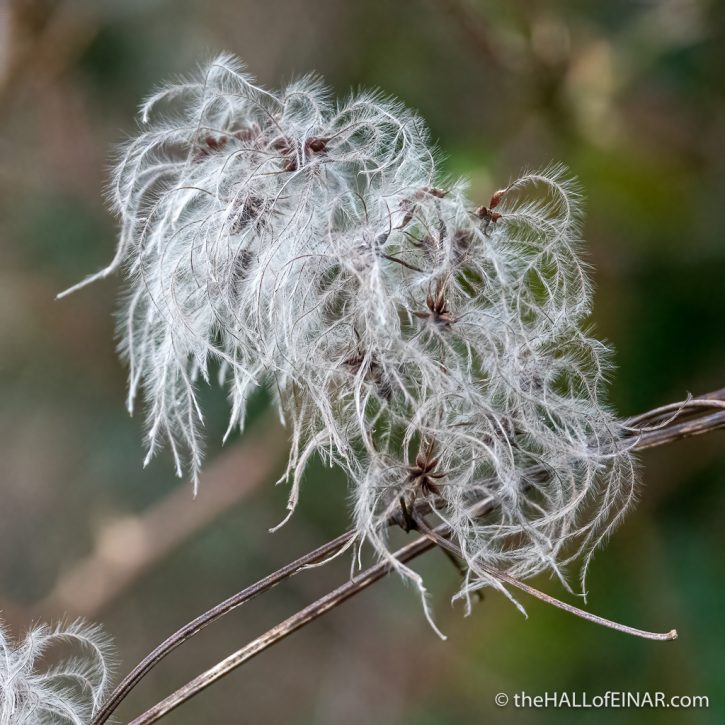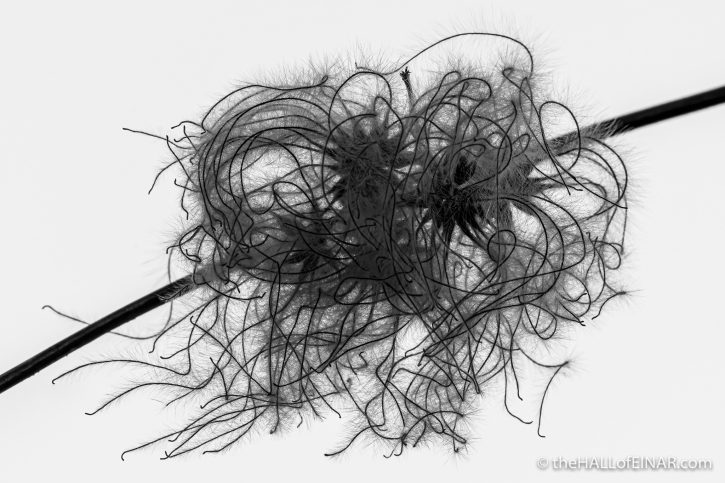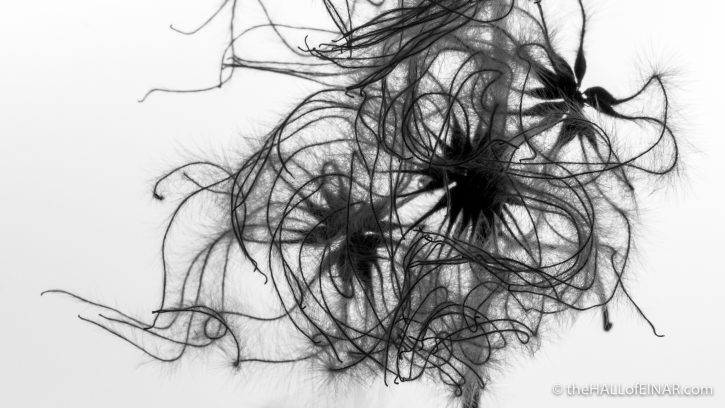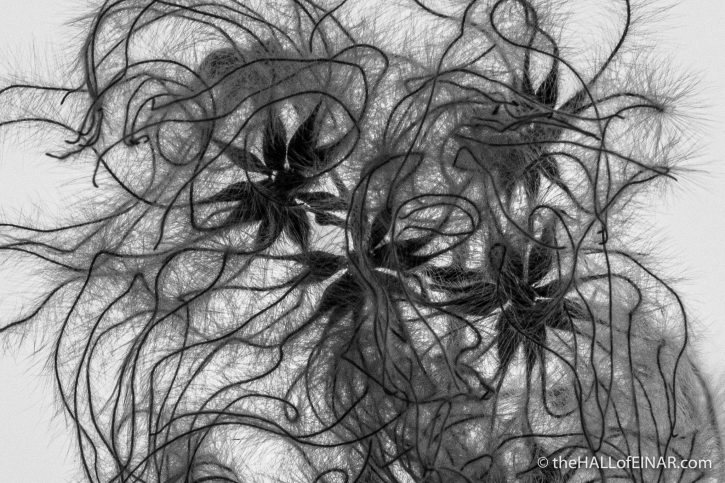Achenes of Old Man’s Beard
Old Man’s Beard is a plant I’ve never consciously seen in flower before. I’m determined to look for it this summer. I’ve seen it in winter, though. It grows in the edges of woodlands, hedgerows, or in gaps in the woodland canopy. That means it’s growing up a security fence on my local industrial estate.
Here it is, looking all old man’s beardy:

It’s a member of the Clematis genus and Clematis are members of the Buttercup family. That’s quite some massive woody buttercup, if you ask me. Clematis vitalba. It’s fabulous silhouetted against the winter sky.

Trying to trace the equivalent parts of plants is a fascinating part of studying the natural world. Old Man’s Beard flowers don’t have any petals, despite their appearance, as their petal-like objects are actually sepals, the leaf-like structures found on the outside of flowers. They look like they have seeds in this photo, but these are achenes, which are single-seeded fruits. And the feathery attachments? They’re the style of each fruit, which is the tube which connects the stigma, the sticky platform which connects the pollen, to the ovary.

Evolution by natural selection is the repurposing of pre-existing parts for wonderful new variations. Minor mutations and millions of years have led to exquisite variety. If you don’t believe me, your arms must still be legs.

I wonder if it’ll still be here in the summer, or whether it’ll get blasted by weedkiller?